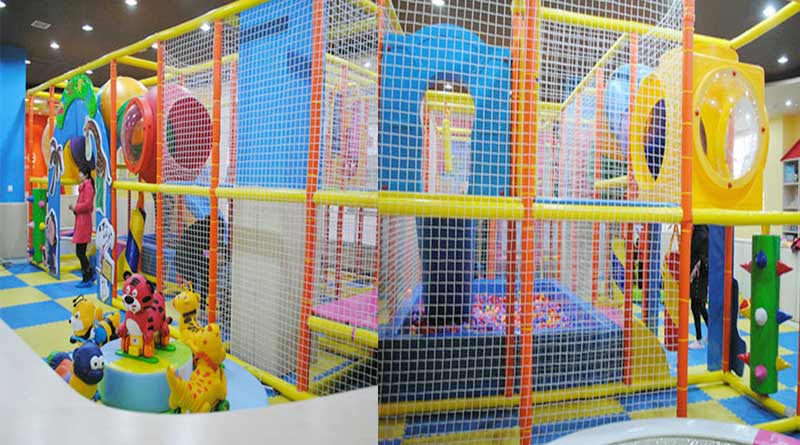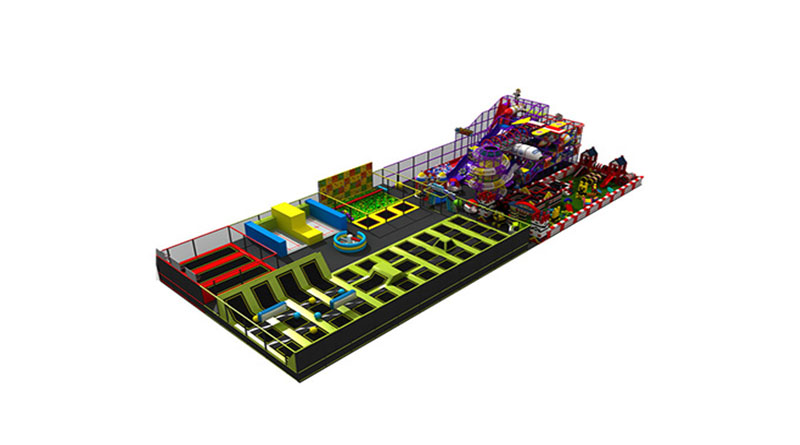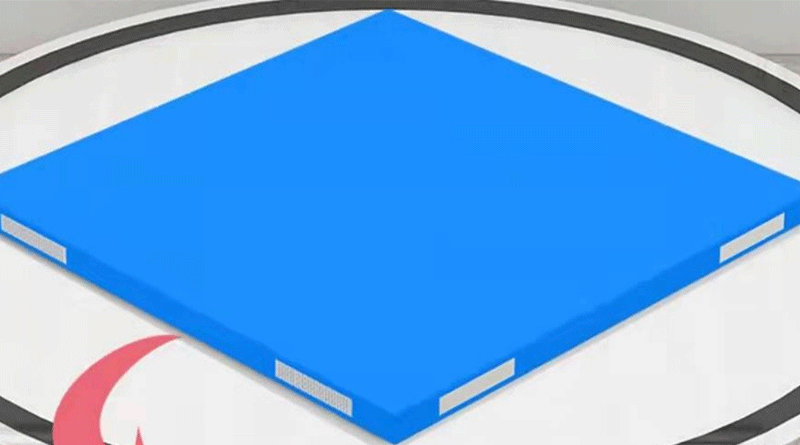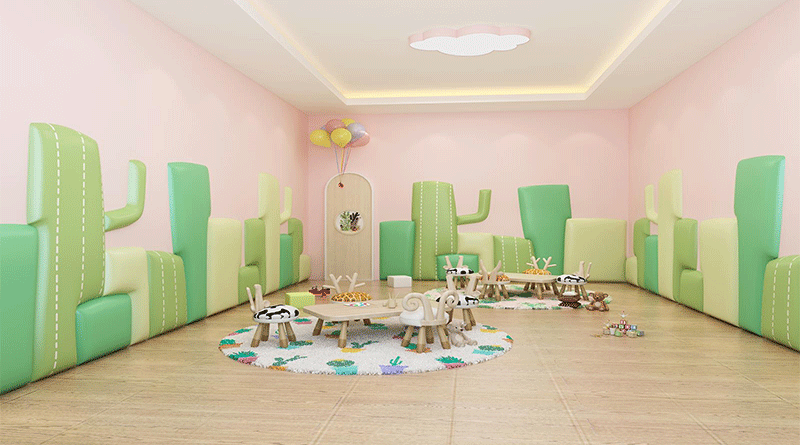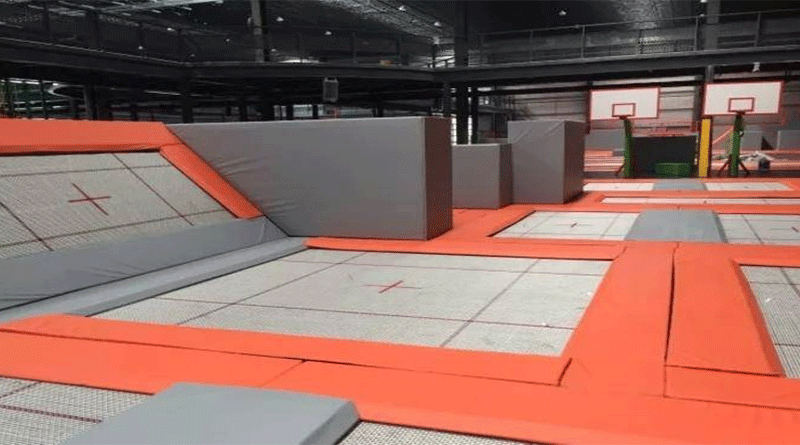How to Create a Safe Indoor Playground
 Jul 18,2025
Jul 18,2025Creating an indoor playground is an exciting venture, promising laughter, activity, and joyful memories. However, the paramount concern must always be safety. A truly successful playground isn't just about the biggest slides or the brightest colors; it's about designing and managing a space where children can explore freely and parents can relax, knowing risks are minimized. This guide outlines essential considerations, with special attention to areas like trampoline parks that require heightened vigilance.
Safety First: The Foundation of Fun
1. Impact Absorption: Falls are inevitable. Mitigate their impact:
Surfacing: Use certified safety flooring throughout – thick rubber tiles, poured-in-place urethane (PIP), or bonded foam. Ensure critical fall height ratings exceed the height of the tallest equipment.
Landing Zones: Extend impact-absorbing surfaces significantly beyond slides, climbing structures, and especially trampoline exit points and foam pits.
Trampoline Park Specific: High-quality safety padding covering every spring, frame, and hard edge is non-negotiable. Deep, well-maintained foam pits with appropriate landing zones are crucial for tricks and dismounts.
2. Secure Equipment: Stability prevents tip-overs and entrapment.
Anchoring: All freestanding equipment (climbers, slides, towers) must be securely anchored to the floor or subfloor per manufacturer specs.
Hardware: Use locknuts or capped bolts. Regularly check for looseness or corrosion.
Entrapment Hazards: Eliminate gaps between 3.5" and 9" where a child's head or body could get stuck (e.g., between railings, in netting, at the top of enclosed slides).
Trampoline Park Specific: Trampoline beds must be taut, properly attached, and free of tears. Nets surrounding trampolines must be secure, high enough, and free of gaps. Check frame welds and connections rigorously.
3. Age-Appropriate Activities: Separation reduces collision risk and frustration.
Zoning: Clearly define separate areas for toddlers (0-3), preschoolers (3-5), and school-age children (5-12+). Use physical barriers (low walls, netting) and distinct color schemes.
Equipment Design: Toddler areas need low platforms, short slides, and wide steps. Older children can handle more complex climbing structures and higher elements.
Trampoline Park Specific: Implement strict zoning: Dedicated toddler trampolines (low impact, often without nets), areas for basic jumping, and potentially advanced zones (with foam pits) for older, more experienced jumpers. Enforce age/height restrictions rigorously.
Design Considerations: Building Safety In
1. Space Planning: Flow and buffer zones prevent chaos.
Adequate Space: Provide generous space around equipment (use zones) as specified by manufacturers and safety standards (often 6+ feet). This prevents collisions and allows safe exits.
Traffic Flow: Design clear pathways between zones to prevent congestion and running across play areas. Separate entry and exit points where possible.
Trampoline Park Specific: Allow ample space between individual trampolines and between trampolines and walls/pits. Ensure clear walkways around the entire court. Designate specific entry/exit points for each trampoline zone.
2. Accessibility: Fun for everyone.
ADA Compliance: Ensure pathways, ramps, and access points meet accessibility standards. Include sensory-friendly elements or designated quiet zones.
Inclusive Play: Incorporate equipment that children of varying abilities can enjoy together.
Trampoline Park Specific: Provide accessible viewing areas and clear communication about which areas are suitable for different abilities. Consider transfer points or specialized equipment if offering inclusive trampoline experiences (consult experts).
3. Materials: Choose wisely for durability and hygiene.
Non-Toxic: All materials (paints, plastics, foams, fabrics) must be certified non-toxic and phthalate-free.
Durable & Cleanable: Surfaces and equipment must withstand heavy use and be easy to clean and disinfect regularly. Avoid porous materials that harbor germs.
Fire Retardant: All soft materials (netting, padding, fabrics) must meet fire safety standards.
Trampoline Park Specific: Trampoline beds must be UV-stable and tear-resistant. Padding must be high-density, closed-cell foam that won't degrade quickly. Pit foam cubes need frequent cleaning and rotation/replacement.
Safety Rules and Supervision
1. Clear Signage: Communicate expectations visually and simply.
Rules: Post prominent, easy-to-understand rules at the entrance and throughout each zone (e.g., "No Running," "Socks Required," "Slide Feet First," "One Person Per Slide"
Age/Height Restrictions: Clearly mark zones and specific equipment with minimum/maximum age or height requirements.
Emergency Info: Display emergency procedures and exit routes.
2. Supervision: Eyes on the play.
Trained Staff: Employ attentive, proactive staff specifically trained in playground safety, first aid, CPR, emergency procedures, and conflict resolution. Trampoline parks require staff trained specifically in trampoline risks, spotting dangerous behavior (collisions, double bouncing, flips in non-designated areas), and foam pit safety.
Positioning: Staff should be positioned to maximize visibility, actively scanning their zones, not distracted.
Parental Role: Clearly communicate that staff supervision supplements, but does not replace, parental supervision. Encourage parents to stay engaged.
3. Communication: Keep everyone informed.
Staff Communication: Equip staff with radios or headsets for quick coordination, especially in large facilities or during incidents.
Parent Briefing: Briefly remind parents of key rules and their supervision responsibilities upon entry.
Conclusion:
Creating a safe indoor playground, especially one incorporating elements like a trampoline park, demands a holistic approach. It starts with foundational safety principles like impact absorption and secure equipment, is built upon thoughtful design for flow and accessibility, and is sustained through vigilant supervision, clear rules, rigorous inspections, and prompt maintenance. By prioritizing safety at every stage – from the initial blueprint to daily operations – you create an environment where the sounds of laughter and play can thrive, underpinned by the confidence that every reasonable measure has been taken to protect the children enjoying it. Remember, in the world of play, safety isn't just a feature; it's the essential ingredient for lasting fun and success.


